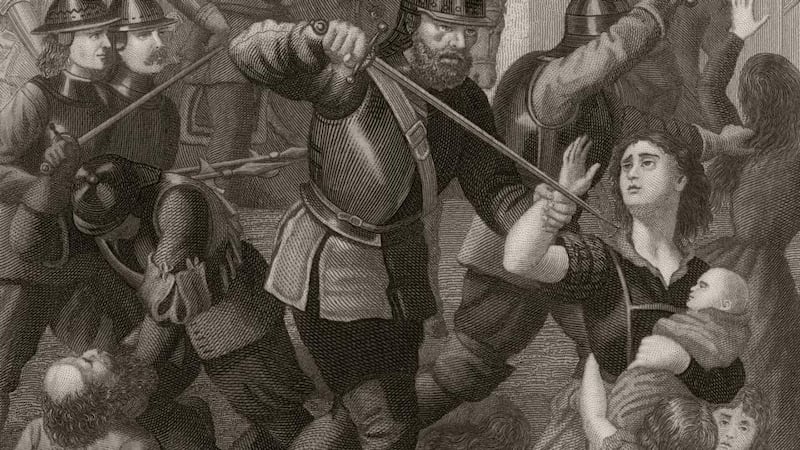The years between 1541 and 1660 were calamitous ones for the native Irish when the old Gaelic civilisation was lost to be replaced by the Protestant ascendancy.
Those were the years between when King Henry VIII was made king of Ireland (previously he had the lordship of Ireland) to the restoration of the English monarchy in 1660.
It includes the Elizabethian plantations, the Nine Years’ War, Battle of Kinsale, Flight of the Earls and horrors of the Cromwellian conquest — events with consequences that have lasted to this day.

A new project at Maynooth University has gathered all the extant writings from, or about, Ireland from that period. There are 4,631 works spanning English, Irish, Latin, Italian, Spanish, French, Welsh, Dutch and German from 1,004 writers.
READ MORE
Macmorris (Mapping Actors and Communities: Modelling Research in Renaissance Ireland in the Sixteenth and Seventeenth Century) was funded with a €1 million grant by the Irish Research Council’s advanced laureate programme in 2019.
Prof Pat Palmer, who is leading the project, said much of what we know about this period is usually filtered through the English language, which was the language of the colonist. She said the project gives the lie to the idea that the old Gaelic civilisation was in decline before defeat at the Battle of Kinsale and the Flight of the Earls in 1607 ended it completely.
To contemporaries, these losses were a close-run thing and the English victory was a shock and a surprise to the native Irish. “It was all to play for,” she said. “Gaelic Ireland was not, as it is often portrayed, this weird, archaic doomed civilisation. What we have not had is a perspective of the Gaelic Irish. The story of early modern Ireland has been largely told through the accessible English texts, the State papers, letters of Sir Henry Sydney, Sir Walter Raleigh [and] Edmund Spencer.”
The Irish perspective is told through the bardic poetry tradition of which there are hundreds of digitised texts that have been translated.
Much of the bardic poetry that has survived in the Irish language is “aesthetically beautiful and very complex”, she added. The poets are “alert politically”.
“The Irish were writing phenomenal amounts in parallel. Because the whole structure that kept the civilisation collapses, Irish scholarship goes off to the continent,” said Prof Palmer.
There is a lot of literature in Spanish, reflecting the involvement of the Spanish in the Battle of Kinsale.
A deep-map of Munster, which is where the first plantations on the island of Ireland took place, captures the vibrancy —and often the violence — that sprang from the enforced coexistence of planters and native lords, English poets and Irish bards, Italian commentators and Spanish captains.
The inclusion of 199 extracts in six languages at 101 sites across Munster gives multiple perspectives on a society on the brink of profound transformation.
The transfer of lands from the native nobility — both Gaelic and old English — to English and Scottish settlers created a new Protestant ascendancy. Consequently, Ireland became a testing ground for English overseas expansion and, simultaneously, one of the theatres of an emerging British empire.
English gradually asserted itself as the language of power, resulting in the decline of Gaelic cultural institutions, including schools of poetry, law and medicine. The gradual process of anglicisation changed ways of seeing the world which the project brings back into circulation.
More information is available on the MacMorris website https://macmorris.maynoothuniversity.ie/










